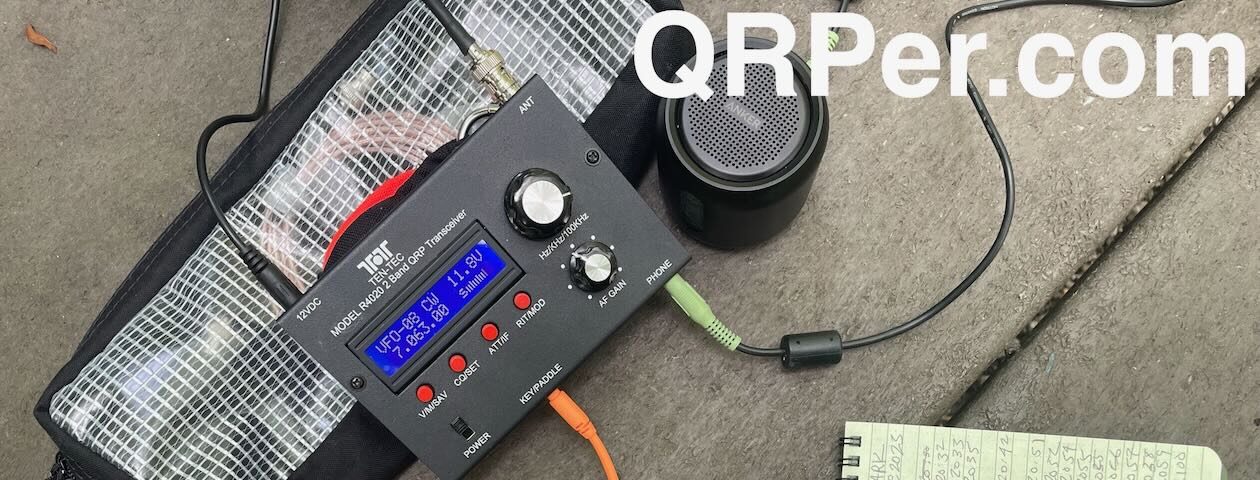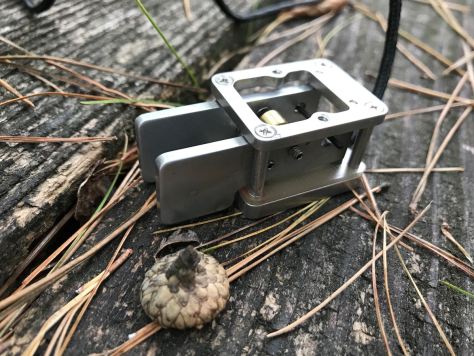I’ve gotten a few messages from readers lately asking, “Why no love for the Icom IC-705?”
Looking back, I realize that I haven’t had the ‘705 in the field for quite some time (at least, in a video and field report).
Truth is, the ‘705 has been doing duty as a shortwave listening receiver in shack and just hasn’t hopped into my field pack recently. Since it’s important for the health of all field radios to soak in the outdoors on a regular basis, I packed it in my bag and took it to one of my favorite parks.
Tuttle Educational State Forest (K-4861)
The weather was beautiful on Thursday, October 21, 2021.
When I arrived at Tuttle, the first thing I did was hike their 2 mile loop to get the blood pumping.

This also gave me time to decide on the antenna to deploy: my Chameleon CHA LEFS.

The CHA LEFS has served me quite well in the past, especially on days with mediocre propagation.
During my hike I decided to do the entire activation on 40 meters only, just to get a better idea how the CHA LEFS’ propagation footprint might look with a larger sample size.
Gear:
- Icom IC-705
- Icom IC-705 3D Printed Foot
- Chameleon CHA LEFS
- N0SA SOTA paddles
- Red Oxx C-Ruck
- Arborist throw line
- Rite In The Rain Weatherproof Cover/Pouch (affiliate link)
- Muji A6 Notepad (affiliate link)
On the Air

Setup was quite easy.
I deployed the CHA LEFS with the feed point at about 35-40′ into a large tree.
The radiator sloped down to a point in the middle of a field and the end was elevated perhaps 4′ off the ground. I secured the end of the antenna to a length of paracord, the end of which was attached to a heavy stick on the ground, stretching the radiator.
The CHA LEFS is resonant on 40 meters, so no external ATU was necessary.
I hopped on the air, started calling CQ POTA in CW and within 10 minutes was rewarded with 10 contacts. It doesn’t get much better than this for a good start!
I continued calling CQ and, in the end, worked a total of 22 contacts in 30 minutes–almost all in CW. Check out the video below to see how it all played out.
Many thanks to KC5F and N9UNX for the Park-To-Park contacts!
Video
Here’s my real-time, real-life video of the entire activation (less antenna set up and take-down):
Click here to view on YouTube.
QSO Map
The QSO Map shows an interesting pattern: a ring with a few close regional stations (almost NVIS), and an outer ring of 40 meter skywave:
Thank you!
I believe one of the attractions of activating parks and summits is the fact that we really have no idea in advance how it might all play out. It’s a bit like going fishing.
I’ve gotten a lot of questions from readers lately about what propagation tools I use. In truth, my main propagation forecasting tool is my buddy Mike (K8RAT). Before I head out–or if he knows I’m hitting the field–he’ll usually text me current conditions and they’re quite accurate.
At the end of the day, though, propagation forecasts never stop me from doing an activation when I want to play radio. I just go out there and see what happens. As I’m sure my childhood fishing buddy–my Great Uncle Luther–would have said, “Any day fishing is better than a good day at work!” (Of course, a real quote from Uncle Luther would have included more “colorful metaphors.”)
A special thanks to those of you who are supporting the site and channel through Patreon and the Coffee Fund. While certainly not a requirement as my content will always be free–I really appreciate the support.
73,
Thomas (K4SWL)


























